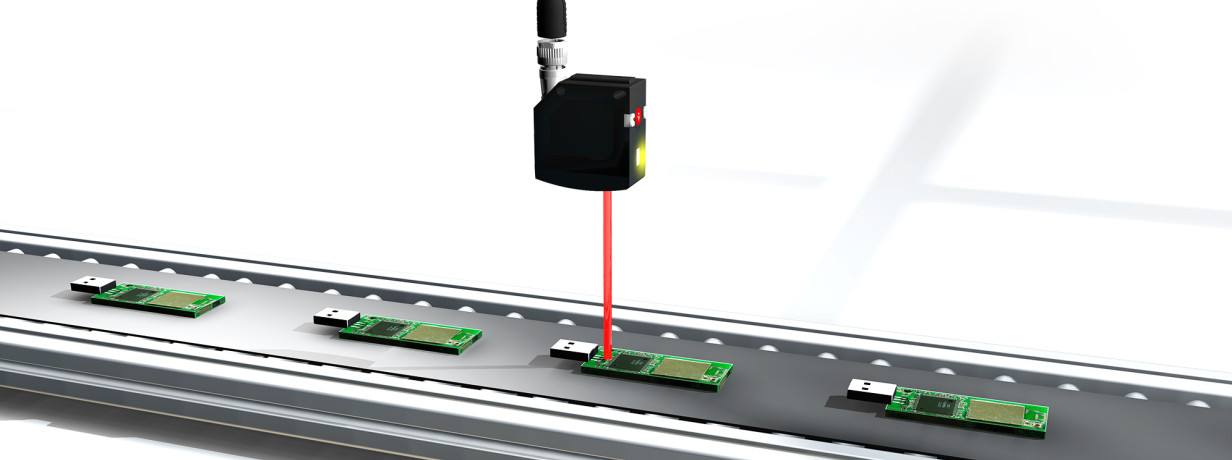- Matrix Vision solutions now all under the Balluff brand
- IO-Link: Intelligent solutions for modern automation
- Smart Automation and Monitoring System
- Condition Monitoring
- Architects of Smart Manufacturing
- Comprehensive components and solutions for automated welding
- Level Detection
- Tough Performers
- Quality Assurance
- Miniaturization
- MicroSPOT
- Explosion Protection
Sensor-based detection
Sensors for all areas of sensor-based detection

Use our sensor-based detection for error prevention.
Our portfolio comprises sensors for object detection, position and distance measurement as well as photoelectric sensors.
Use our sensor-based detection for error prevention. Our portfolio comprises sensors for object detection, position and distance measurement as well as photoelectric sensors. Balluff object detection sensors reliably detect whether an object is present, , providing yes/no results. Simple and effective they provide solutions for many applications. This kind of scanning is ideal if the objects to be checked are firmly secured.
Position and Distance Measurement sensors area ideal for applications when objects need to be scanned and have their position checked.
Our photoelectric sensors detect the right color and the correct material of the object being checked.
Solutions for error prevention
Traceability for Just-in-Sequence
Just-in-Sequence (JIS) is a continuation of the Just-in-Time (JIT) material flow. JIS is common on assembly lines in flexible production and provides the right assembly parts at the right time and in the right order.
The order is matched to the assembly process. The right components are automatically positioned correctly.
Moreover, the traceability of each production step ensures the delivery of products in the right order. This is because with the combination of RFID and a multi-barcode scanner, the products are detected and monitored with ease.
This solution is easy to integrate into existing processes and guarantees the error-free control of scanning.
Managing deviations with RFID systems
Traceability is a fixed component of flexible production. Each manufactured part can be traced and identified. For this purpose, an ideal type is described fully in the design data as an example. For example, if its color is dark blue, the color sensor must confirm this. Color sensors or vision systems thus verify what the design data specifies.
If the object being checked deviates from the specified prototype, the deviation can be controlled with the help of one of the following three procedures. To implement the procedures, RFID systems are used.
Rejection: With rejection, the part concerned is to be either destroyed or marked in such a way that it cannot be used in the downstream processes. With traceability, it is easy to ensure that rejected parts are discharged from the production process.
Reclassification: In certain cases, products that do not meet the specifications or do not meet them fully can also be reclassified, for example, as B-stock.
Reworking: For reworking, production can be stopped to correct the part concerned on the spot. However, because this can have drawbacks for the entire factory, it is better to set up a reworking area. This is common when a product goes through various assembly procedures on conveyor belts. If an error is detected, downstream processes can be circumvented and the repair technician can be given the exact error description. After the repair, the reworked part can be guided back into the production process using the traceability data. Steps that have already been completed are skipped.
Color sequence controlling with true color sensors
Frequent color changes in a production line are a daily occurrence in flexible production. As time goes on, it becomes difficult for operators to correctly assign colors. Our true color sensors have therefore become an important factor in the success of poka-yoke. This is because with the easy to operate, reliable sensors, a wide variety of colors and color nuances can be detected.
To ensure that a process happens correctly, the true color sensors verify the components both during the preparation of the delivery and after the receipt of delivery. If more than one color combination is necessary, the sensors compare different colors of various components and indicate when they match.
Complex scanning applications with vision sensors
Vision systems are oversized for most production facilities: Too expensive, to complex, too much functionality. In contrast, our BVS vision sensors are simple to set up and extremely easy to operate. And your investment will pay itself off in no time.
One sensor instead of many different sensors: The BVS vision sensor is an extremely powerful tool for error prevention in almost all production areas. It reliably detects the presence or the absence of a part or feature, checks its position and dimensions. And ensures reliable barcode monitoring.
With its comprehensive functions, the BVS vision sensor often takes on the tasks of many different sensors. This makes it outperform other sensors in its class.
Increase product quality: With the use of our BVS vision sensors there is no need for unreliable manual inspections. Instead of audits, vision sensors earn points with 100% quality control and with the resolution that such control requires.
Reduce costs: Thanks to a wealth of sensor functions, you do not require any complicated multi-sensor solutions. And save costs at the same time. Our BVS vision sensors offer you a good price/performance ratio. Just choose between four models with various levels of performance and a single, easy-to-operate software package. For short set-up times and lower start-up costs.
Increase productivity: The automated checks of the BVS vision sensors prevent errors during the process and increase the speed of your production. The high code resolution guarantees a high level of reliability. And the faulty reading of codes is minimized.
Early error detection reduces unplanned downtimes and waste. The increased functionality and flexibility also shorten planned downtimes.
